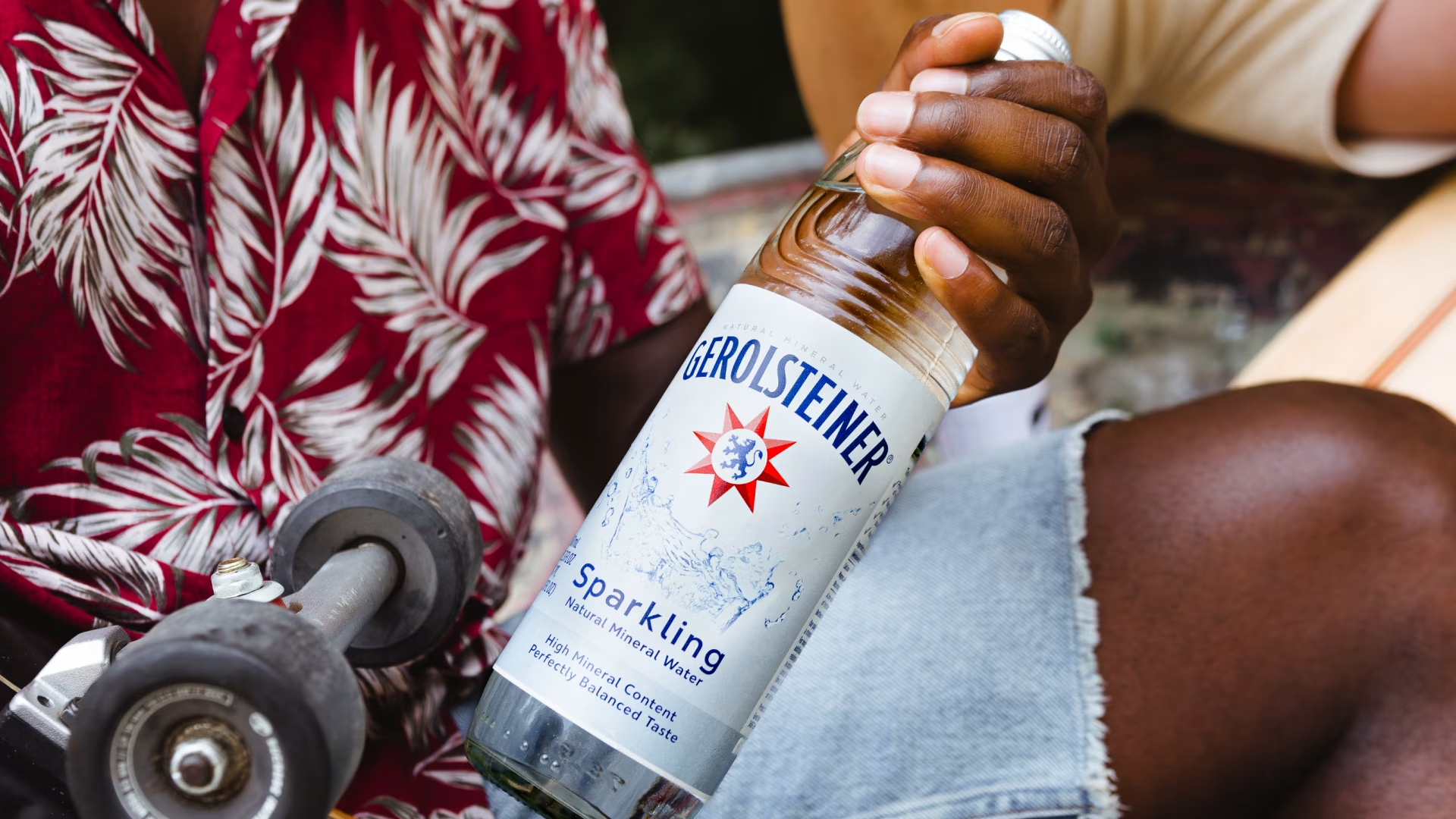Bicarbonate in mineral water
Quick Facts: Bicarbonate
Definition
Bicarbonate (hydrogen carbonate) is not a mineral, but a component of the salts of carbonic acid. HCO3- is its chemical formula. Your body produces bicarbonate.
Function
Bicarbonate has an acid-neutralising effect and balances the taste of carbonic acid.
Daily requirement
Unlike many essential nutrients, for example, calcium and magnesium, your body can generate bicarbonate, but generally in insufficient amounts for optimum health and wellness. There is no recommended daily allowance.
The significance of bicarbonate
Bicarbonate, also known as hydrogen carbonate, is responsible for maintaining the balance of acids and bases in your body, i.e. the pH value. It is a base or alkaline, therefore an important “opponent” of acids. Bicarbonate works as an acid buffer. Your body does generate bicarbonate during metabolism, but generally not enough to regulate the acid/base-balance your body needs to function efficiently.
Bicarbonate is a natural component of all mineral waters. Mineral waters that are sourced from limestone-rich areas typically have a high bicarbonate content. Bicarbonate plays a vital role in buffering acids and ensures that the mineral water tastes pleasantly clean and refreshing.
Bicarbonate intake
Mineral water provides a good way to consume bicarbonate. A mineral water can be regarded as containing bicarbonate if it has a bicarbonate content of 600 mg per liter. How much bicarbonate a water provides can be seen on the label of the bottle. With 1,816 mg bicarbonate per liter, Gerolsteiner Sparkling contains a lot of this ingredient; Gerolsteiner Naturell is also regarded as containing bicarbonate with an amount of 577 milligrams. If you want to make a direct comparison, go to the Mineral Calculator, where you can compare nearly 500 internationally available waters.
The bicarbonate test
You need the following for the test:
100ml Gerolsteiner Sparkling
100ml tap water
1 liter cola
4 x 300ml glasses
pH test strips with an indicator scale
What are pH values?
The letters pH stand for "power of hydrogen" and is used to define the acid/alkaline levels of liquids. The pH scale is a set of standard solutions whose pH is established by international agreement. pH value indicates whether a fluid is strongly acidic (pH value 0), neutral (pH value 7) or strongly alkaline (pH value 14)
Fill one glass with Gerolsteiner and another glass with tap water. Fill two glasses with 100 ml cola each. Dip a test strip into each glass of water and into one of the glasses of cola for approx. 1 – 3 seconds. Place each strip in front of each glass and read off the scale what pH-value the respective fluids have. Hold the indicator scale close to each strip so determine pH value. Note down the values.
Now for the fun part of the test: pour the Gerolsteiner into one of the glasses of cola and pour the tap water into the other glass of cola. Stir both briefly and then test the pH value again. You’ll notice that the cola that was with tap water now has a somewhat higher pH value of approx. 3.3 - still an acidic value. The cola that was mixed with Gerolsteiner now has a pH value of approx. 5.5. – a significantly reduced acidic level.
You might also like

minerals and mineral water
Calcium in mineral water
Find out how calcium in Gerolsteiner mineral water supports your health and promotes your well-being.
find out more about calcium
minerals and mineral water
Magnesium in mineral water
Find out how magnesium in Gerolsteiner mineral water supports your health and promotes your well-being.
find out more about magnesium